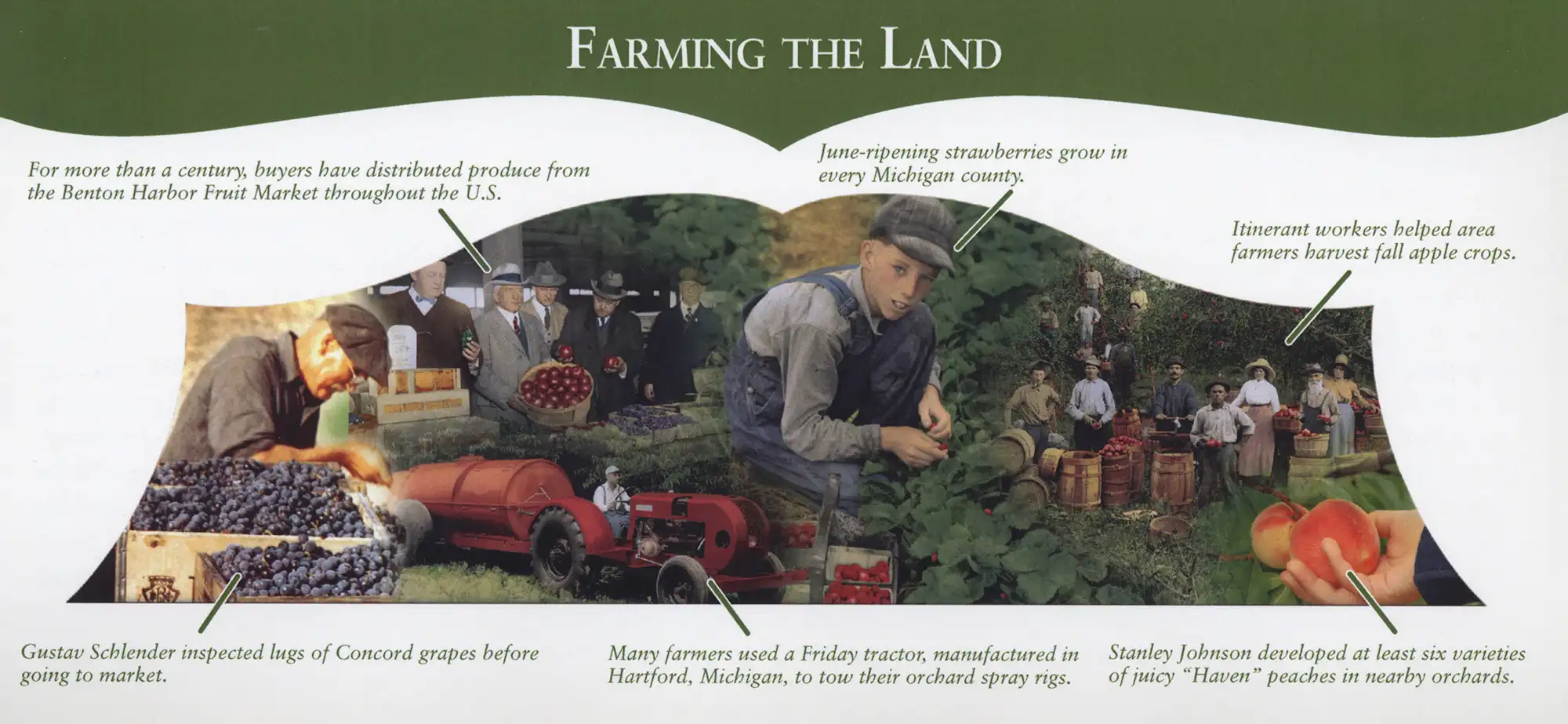
Farming the Land
Beginning in Berrien County and running north to the tip of the Lower Peninsula, the eastern shore of Lake Michigan is commonly called “The Fruit Belt.” Its temperate climate helps our state become a national leader in cherry, apple and blueberry production. Michigan leads the country in 15 agricultural commodities and is in the top ten in 20 others. Berrien County leads the state in diversity and is number one in the production of pickle cucumbers, grapes, nectarines and freestone peaches. Truly we are the richest agricultural region in the world.
Our area’s reputation as the “heart of the fruit belt” began in the late 1700s when settlers and traders planted peach trees here. Soon sail and steam ships transported the peaches to Chicago and Milwaukee. In 1887, the peach orchards were plagued with a devastating epidemic called The Yellows, a calamity caused by a bacterial organism that had no known cure. The only option for eradication was the complete destruction of the orchards.
Farmers learned a valuable lesson and began to plant a variety of fruit trees with a strict quarantine on incoming rootstock and seedlings. This prevented the deadly agricultural affliction from revisiting their land. This also gave impetus to develop peach varieties. Stanley Johnson developed six varieties with “Haven” in the name. Flaming Fury, a newer and very popular line of peaches, is still being developed in Coloma, Michigan.
The Benton Harbor Fruit Market began operation in 1860. Buyers still come to this open-air market to buy fruits and vegetables and distribute them around the U.S.A. It is the largest “cash-to-grower” wholesale produce market in the world.
Farming attracted many people from Eastern Europe to our region in the 19th and 20th centuries. It also inspired many entrepreneurs such as the Friday Tractor Co. in Hartford.
The Farming the Land Rounding Board was made possible by a donation from Barb and Diane Radewald.